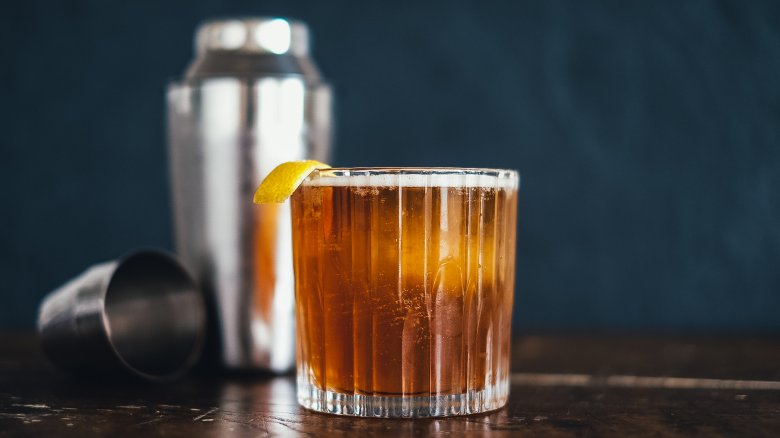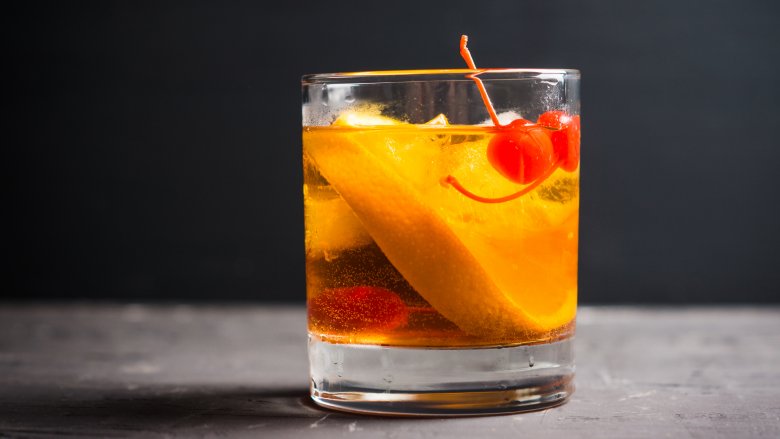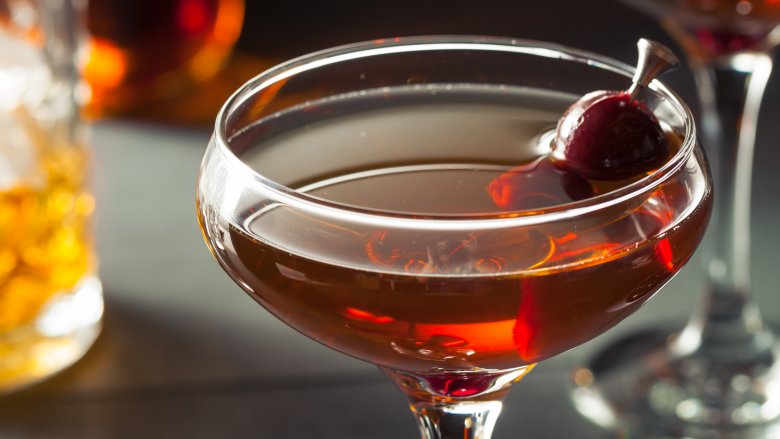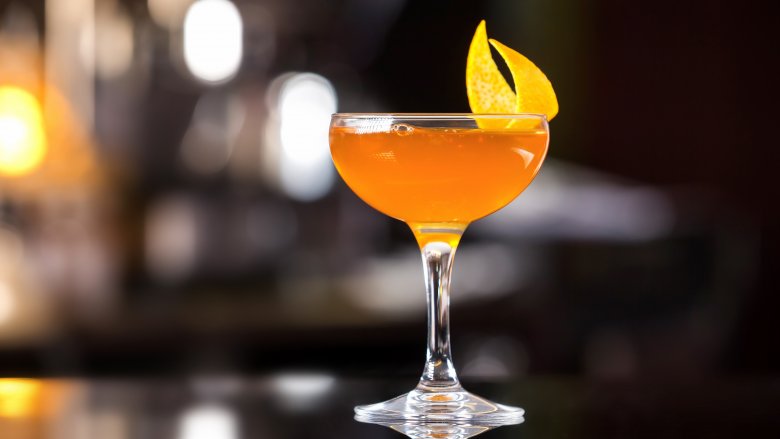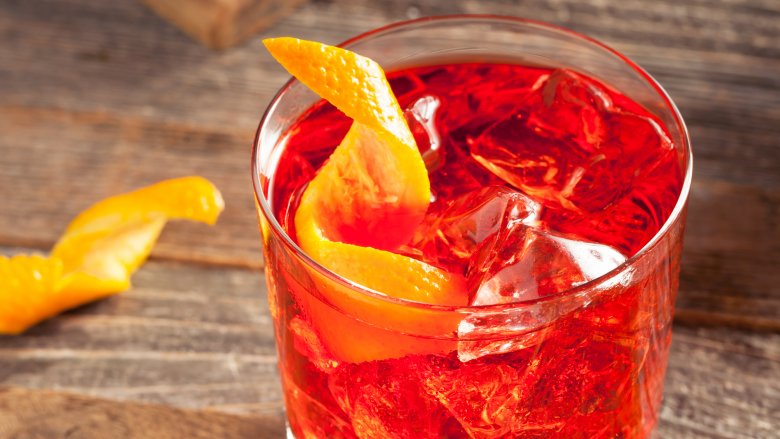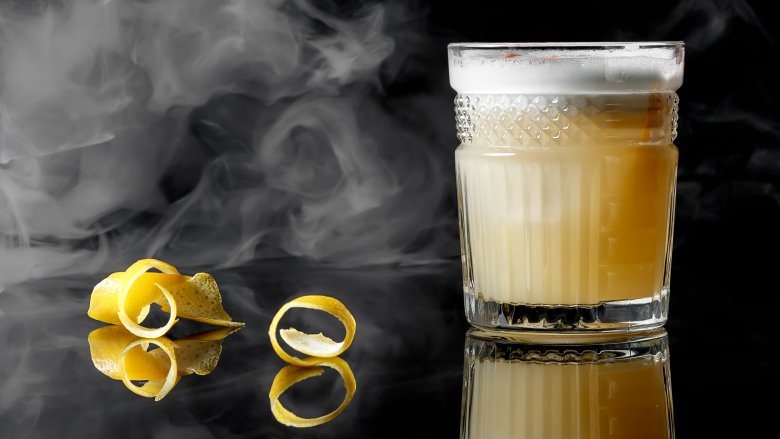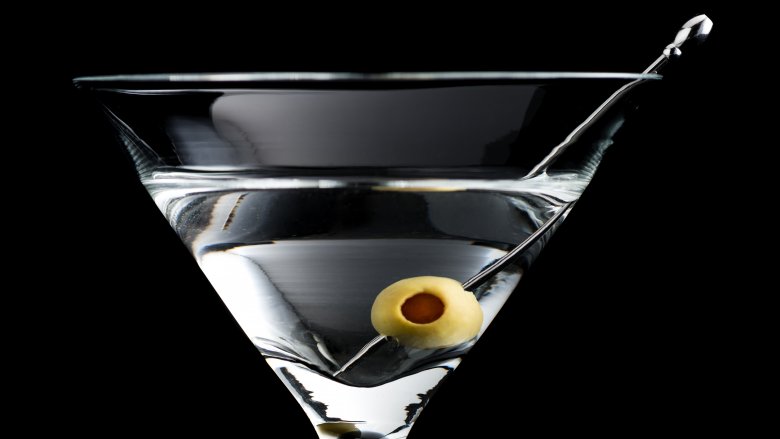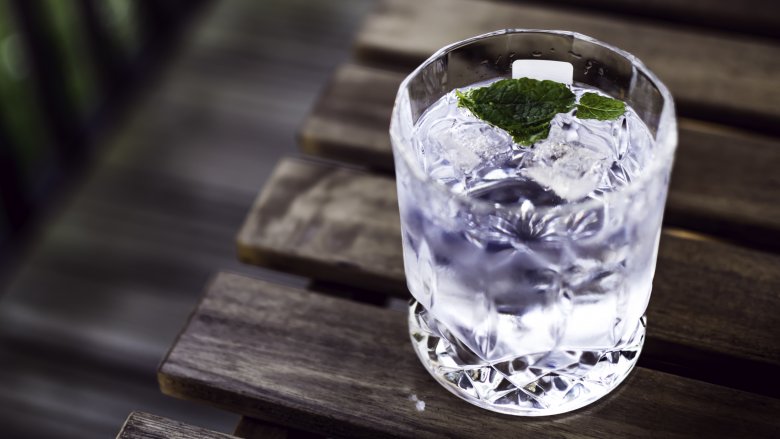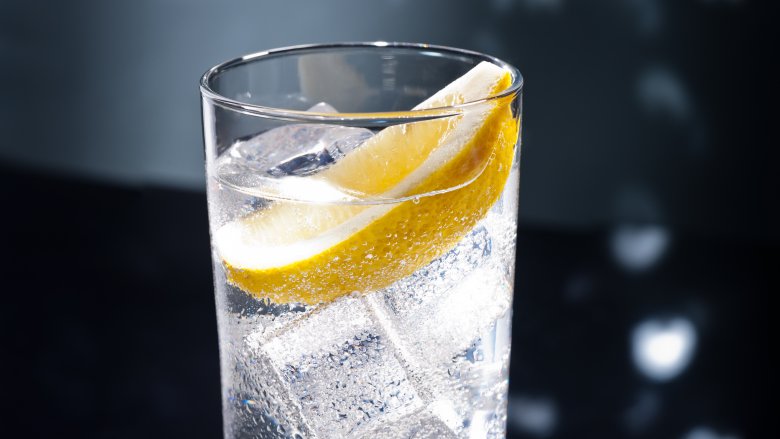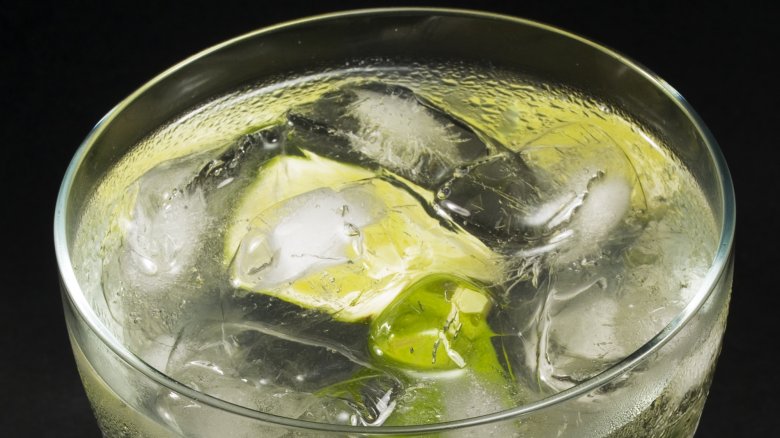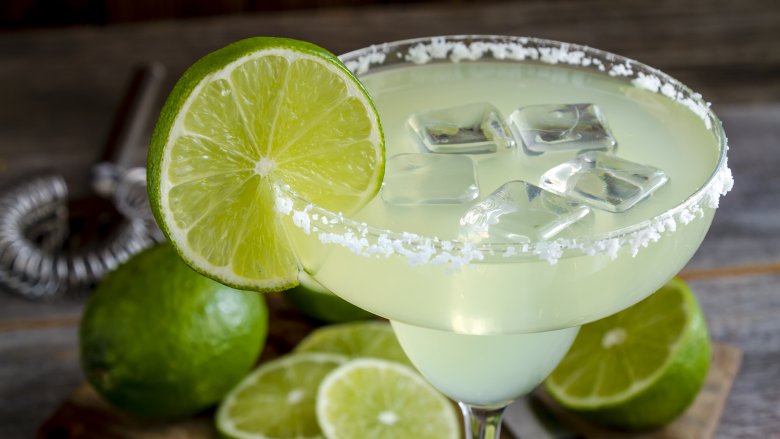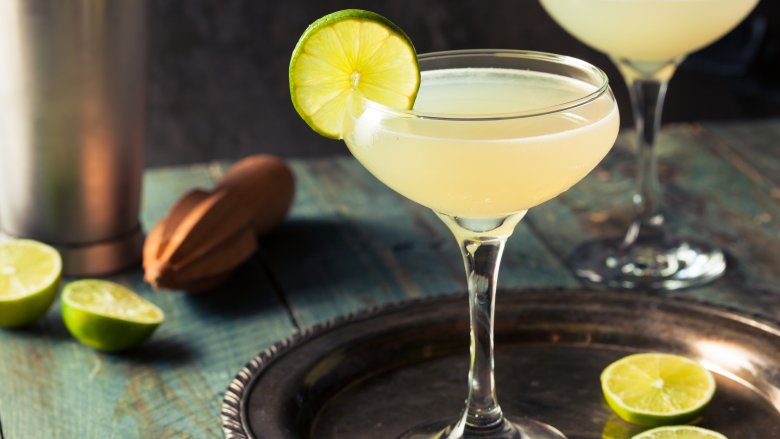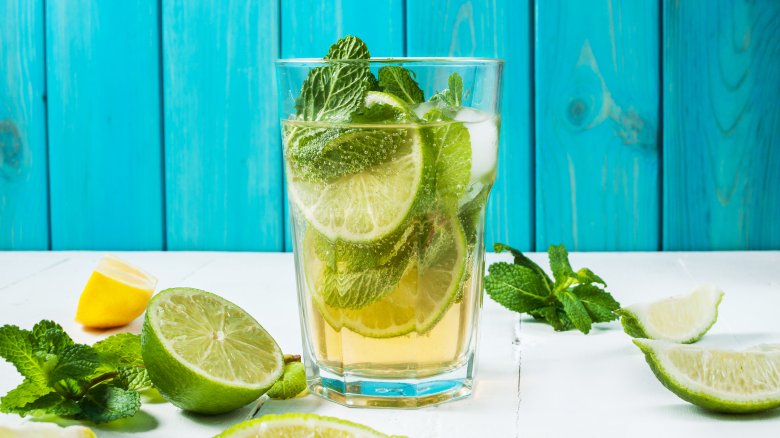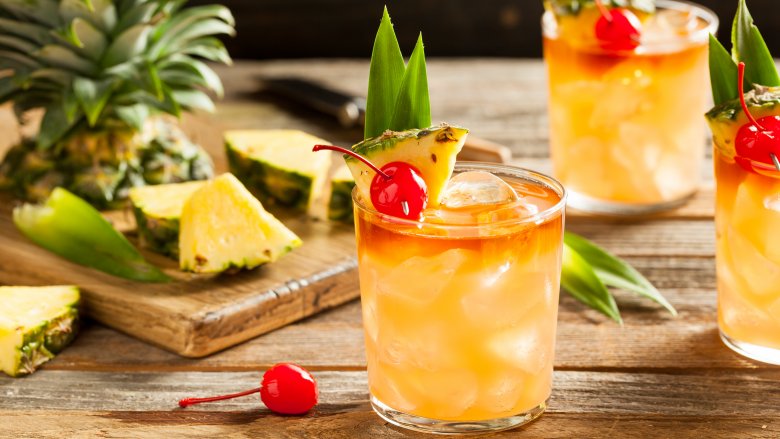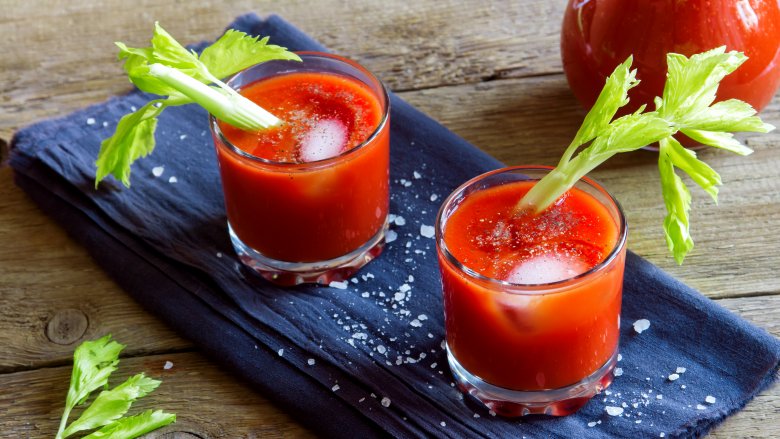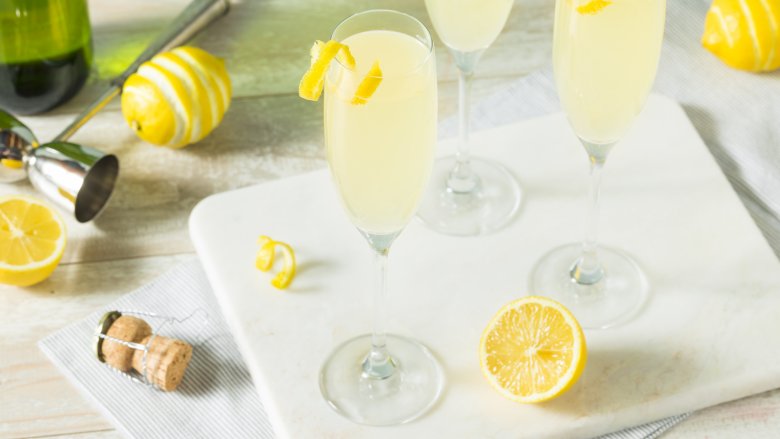Classic Cocktails You Should Know How To Make
You simply can't go wrong with a classic cocktail. Manhattans, margaritas, gin and tonics, these cocktails among others have proven to withstand the ever-changing drink trends despite how long they've been around. The reason? They have a foolproof recipe that is simple and delicious. Like any good bartender, if you're a cocktail enthusiast then there are several classics you should know how to mix up. From their interesting history to simple ingredients, you'll be able to impress your guests by mastering these classic cocktails.
Old-fashioned
Quite possibly the quintessential classic cocktail, the old-fashioned has been around since the 1880s. The name itself refers to the Old-Fashioned way in which cocktail purist would order their libation, with only four ingredients.
If you're a cocktail purist at heart, then grab your old-fashioned glass and get to work. Start by adding a sugar cube, Angostura bitters, and bourbon to the glass, then stir until the sugar is dissolved. Next, add the desired amount of ice. Now, rub an orange peel around the rim of the glass then drop it in. The fragrant oils from the orange will enhance your sipping experience, sending you back to the good ol' days of cocktail classics.
Manhattan
In need of a good stiff drink? Then look no further than the Manhattan. Sweet vermouth, aromatic bitters, and a good quality whiskey — preferably rye — perfect this smooth, classy cocktail. Dating back to the 1800s, the Manhattan was one of the first to use vermouth as an ingredient, and are we sure glad it did! The Manhattan is one irresistible classic that is to hard to pass up.
Whether you're sitting in front of a roaring fire or having social hour with friends, it's a good time to mix up a Manhattan. What you'll need is two ounces of rye whiskey, an ounce of sweet vermouth, and a few dashes of bitters. Add all the ingredients to a glass with ice, stir, then strain into a cocktail glass and garnish with a maraschino cherry. Now sit back, relax, and enjoy your cocktail.
Sidecar
A bartender favorite, this sweet, classy cocktail was meant for after dinner sipping. The correct recipe, however, is as convoluted as its history. One story suggests it was named after an American army captain in Paris in the 1920s who loved riding around in a motorcycle with a sidecar. The other story discussed by Dale Degroff of The Essential Cocktail (via Huffpost) suggests it was born in 19th century New Orleans where it was named after the bartender term for pouring leftover liquor into shot glasses. Despite who invented it, like the margarita, there are interpretations on how to make it. If you want to stick with the classics, try the French recipe. In a shaker, with ice combine equal parts cognac, Cointreau, and lemon juice. Shake, then strain into a coupe glass. Or whatever glass you fancy, really — we're not judging.
Negroni
The Negroni cocktail is an Italian classic made out of the iconic liquor Campari. Vibrant red in color, this classic has really taken off in recent years, but has supposedly been around since 1919. The story goes that Count Camillo Negroni asked his local bartender at Caffe Casoni in Florence, Italy to use gin in his Americano cocktail rather than club soda. The cocktail was a success, and soon came to be known as the Negroni.
If you like your cocktails strong and bitter, then this classic is for you. Despite it's beautiful ruby red color that suggests a sugary taste, it packs a punch due to its strong ingredients. To make this boozy cocktail, combine equal parts Campari, gin, and sweet vermouth, stir, then garnish with an orange slice. One sip and you'll see how the Negroni became an Italian classic.
Whiskey sour
Popular in its heyday right alongside the Manhattan and old-fashioned is the whiskey sour. While poor sour mixes may be responsible for the decline of its popularity over time, bartenders have revived the classic by ditching the mixes and going back to using solid ingredients. While trendy bars may have their own spin on the classic, the first written account of the whiskey sour is the 1862 book The Bartender's Guide, but it was probably around way before that. In the book the recipe called for sugar, lemon, and whiskey.
If you swear it's not a whiskey sour without the egg however, then here's what you need to do to whip up a frothy whiskey sour. In a shaker with ice, add two ounces of whiskey, an ounce of lemon juice, egg white, and a dash of simple syrup. Shake, then strain into a rocks glass with ice. Now let your worries melt away as you imbibe this frothy, citrusy cocktail.
Martini
There's no doubt that if you haven't had a martini, you're at least familiar with it's reputation. A seemingly simple classic, this two-ingredient cocktail can stir quite the fuss when it comes time to making one. Shaken or stirred? Gin or vodka? Dirty or dry? Then there's the whole garnish ordeal. While everyone has their preference, if you're looking to make a great classic martini, you'll want gin.
To make a gin martini, add 2.5 ounces of gin and half an ounce of vermouth in a mixing glass. Stir like you mean it for about 30 seconds, then strain into a classic martini glass. While we'll leave the garnish up to you, a few olives or a lemon peel are always a nice touch. Loaded with flavorful botanicals, it's easy to see why gin and vermouth are the only two-ingredients necessary to make this cocktail. Smooth, sophisticated, and herbal in flavor, it's no wonder many have tried to take credit for its birth.
Gin and tonic
You simply can't go wrong with a gin and tonic. The two-ingredient cocktail sounds like something that was just tossed together, but like all the other classics, it has an interesting backstory. In the 1800s, British officers in India took to battling malaria by drinking quinine tonic. Making the tonic taste better, they add gin to the mix, thus the gin and tonic was born.
With the ingredients in the name, there's really no excuse to not knowing how to make this classic cocktail. If you need a little guidance on ratios, the strength is up to you. I recommend starting with one part gin to two parts tonic. Toss in some ice and a lime for garnish and you're ready to fight off malaria, or at least the stress of a hard day at work.
Tom Collins
You may not have known Tom Collins, but you've probably tasted his legacy. A classic that has been around since 1874, Tom Collins was a fictitious character that was nothing more than the main punchline of a ridiculous prank. Probably hilarious back in the day, a friend would rouse a his buddy in the bar by claiming a man named Tom Collins was going from bar to bar bad mouthing him. The point was to anger the friend so much, he would storm off into the streets in search of Tom Collins. While you're friends may not do this while you're entertaining in your own home, it's a classic that's worthy of mixing up.
To start, you'll want to fill a glass with ice and place it in the freezer. In a cocktail shaker with ice, add 2.5 ounces of gin, about an ounce lemon juice, and half an ounce of simple syrup. Shake, then strain into the glass. The cocktail is then topped with club soda and a lemon wedge for garnish. Simple, refreshing, and no joke about it, the Tom Collins is a classic cocktail that takes no time at all to master.
Gimlet
A gimlet is a simple, easy cocktail to shake up at home. Requiring only two ingredients, it's another classic there really is no excuse in not knowing how to make. A couple ounces of gin with a dash of lime and you're ready to imbibe.
What may cause some debating, however, is how the gimlet got its name. One story suggests that the drink was a creation of English sailors who drank their gin with a dash of lime to prevent scurvy. Another story explains that it's named after the hand tool used to tap into spirit barrels. Whichever the case, the gimlet is a refreshing classic you can easily mix up for last minute company.
Margarita
Nowadays you'd be hard-pressed to find a cocktail drinker that doesn't know what a margarita is. What you may find, however, is a debate on how to properly make this classic. On the rocks, blended, with or without salt, there is an endless array of variations to this cocktail. Like it's ingredients, there are also many stories about its creation. According to National Geographic, one plausible explanation is that it evolved from a cocktail known as "daisy." Daisy was a popular cocktail in the '30s and '40s that contained the drinker's alcohol of choice, grenadine, and lime. When made with tequila, it was mixed with orange liqueur, lime, and soda. As it grew in popularity, it took on the Spanish word for daisy, margarita.
To shake up this classic, pour four ounces of quality tequila in a shaker along with two ounces of Cointreau, juice of two limes, and ice. Shake, then strain into a glass with ice and garnish with a lime wedge. We'll leave the salting option up to you.
Daiquiri
Have you ever wondered why an island vacation and a daiquiri go hand-in-hand? Maybe it's the sweet fruity flavor, maybe it's because of its origins, or maybe it's both. The daiquiri was supposedly invented in Cuba by an American engineer by the name Jennings Cox. Story goes, he ran out of gin entertaining guests so he opted for rum, mixing it with ingredients that turned it into a punch. Needing a name, he chose the nearby beach, Daiquiri. Ah, so maybe that's why it tastes so good on the beach.
If you're in dire need of a beach vacation, this is one classic you'll be happy to know how to make off-hand. In your trusty shaker filled with ice, combine a couple ounces of rum, an ounce of lime, and half an ounce of simple syrup to sweeten. Shake, strain into a chilled glass, then sip your way to tropical paradise.
Mojito
Originating from the 16th-century Cuban cocktail El Draque, it was supposedly the farm laborers of Cuba that are responsible for the spread of the mojito. Like doctoring up cheap liquor during prohibition, farmers in Cuba doctored up their cheap rum by making mojitos. And boy are we glad they did. As it became popular in the fields, the mojito eventually made its way to the bars of Havana where Americans enjoyed the cocktail during Prohibition. Eventually, it found its way to the states and has been enjoyed since.
The mojito may take a little extra love and care to make when compared to the other classics, but it's worth it. First, muddle mint leaves in a shaker. Then add equal parts simple syrup and lime, along with an ounce and a half of white rum. Shake, then pour into a highball glass. Next, the cocktail is topped with club soda and more mint for garnish. Really, the only extra step here is muddling the mint. And that extra step is worthy the refreshing, citrusy taste of a classic mojito.
Mai tai
The ultimate tiki cocktail, the mai tai is relatively new compared to the other classics. That doesn't discredit its foolproof recipe though. Trader Vic's restaurant chain owner Victor J. Bergeron is credited with inventing this cocktail in the 1940s. Consisting of light rum, dark rum, orange curacao, Orgeat syrup, and lime, all the ingredients — except the dark rum — are shaken up in a shaker. It's then strained into a highball glass and a shot of dark rum is floated on top. Garnished with pineapple and maraschino cherries, it's easy to get lost in this cocktail. Be careful though, a couple of these guys and you may think you're sipping on a mai tai in a Tahitian tiki hut, when really you're drinking inside Trader Vic's.
Bloody Mary
Anyone who has had a hangover or partaken in an adult Sunday brunch is familiar with the Bloody Mary. While bartender Fernand Petiot claimed to have invented the Bloody Mary in the 1920s while working at a bar in Paris, we can all agree that when it comes to this cocktail, everyone has their own way to mix it up. And although many may claim to make the best, you have to master the basic structure of this cocktail before you can begin experimenting.
To begin, mix an ounce of vodka with two ounces tomato juice in a glass. Then to taste, add in lemon juice, Worcestershire, salt, and pepper. Stir it all up and pour into a glass with ice. Once you've mastered your portions, you can go crazy with the garnishes and other twists. Olives, candied bacon, celery, and hot sauce, whatever you do, this is one classic you simply must know — especially when it's time for some hair of the dog.
French 75
Forget mimosas, the French 75 is your answer to a classy Sunday brunch. A combination of champagne, gin, lemon, and simple syrup, this sparkling classic is one that every cocktail enthusiast should know how to mix. To start, add an ounce of gin along with half an ounce each of lemon juice and simple syrup to a shaker with ice. Shake for a few seconds then strain into a champagne flute. Top it off with champagne and you have yourself a refreshing French 75.
Oh, and if you're wondering the story behind how this classic got it's name, like all the others it has a fuzzy history. The name itself, however, supposedly was from the French artillery gun that was an iconic symbol of WWI.
